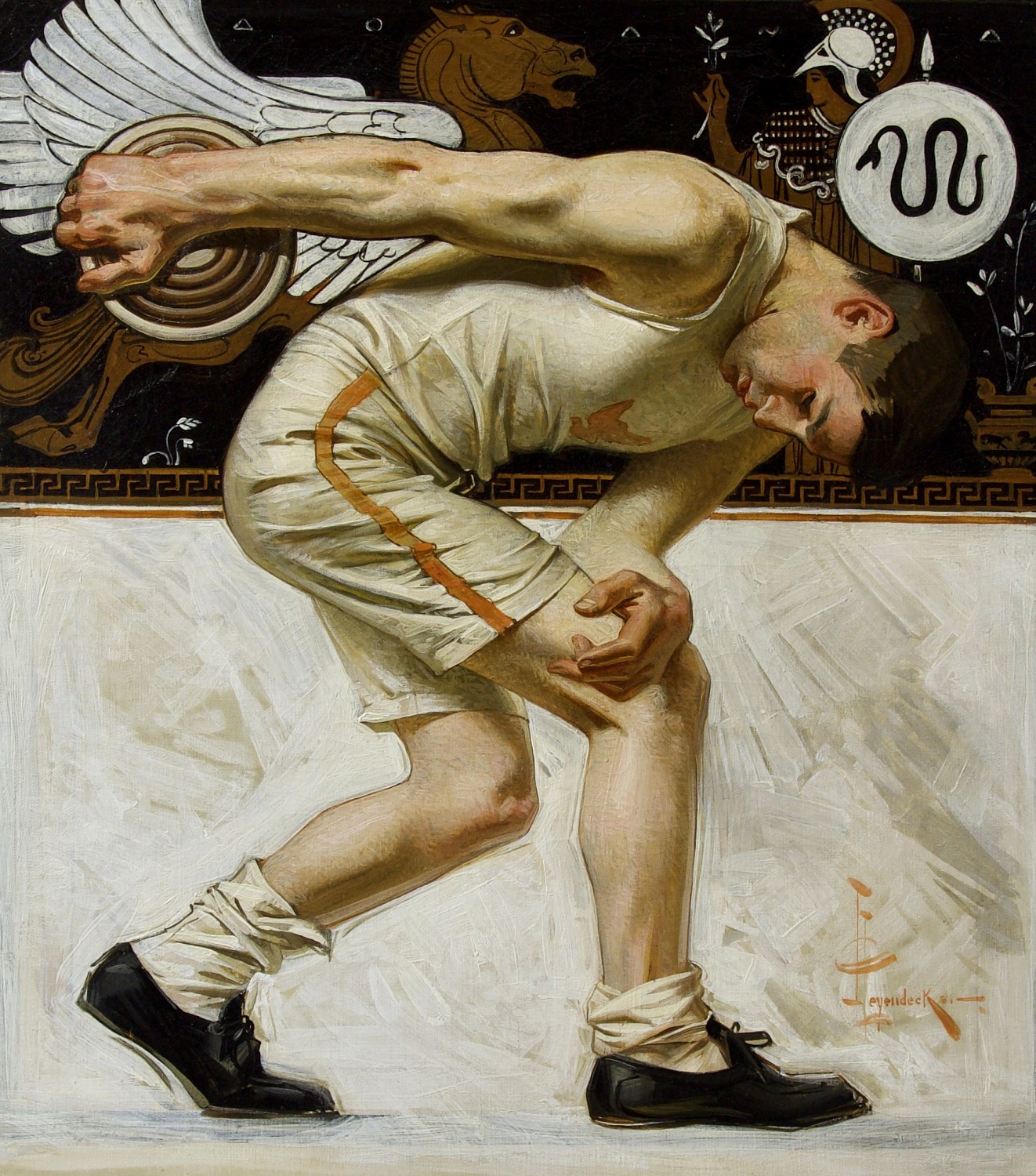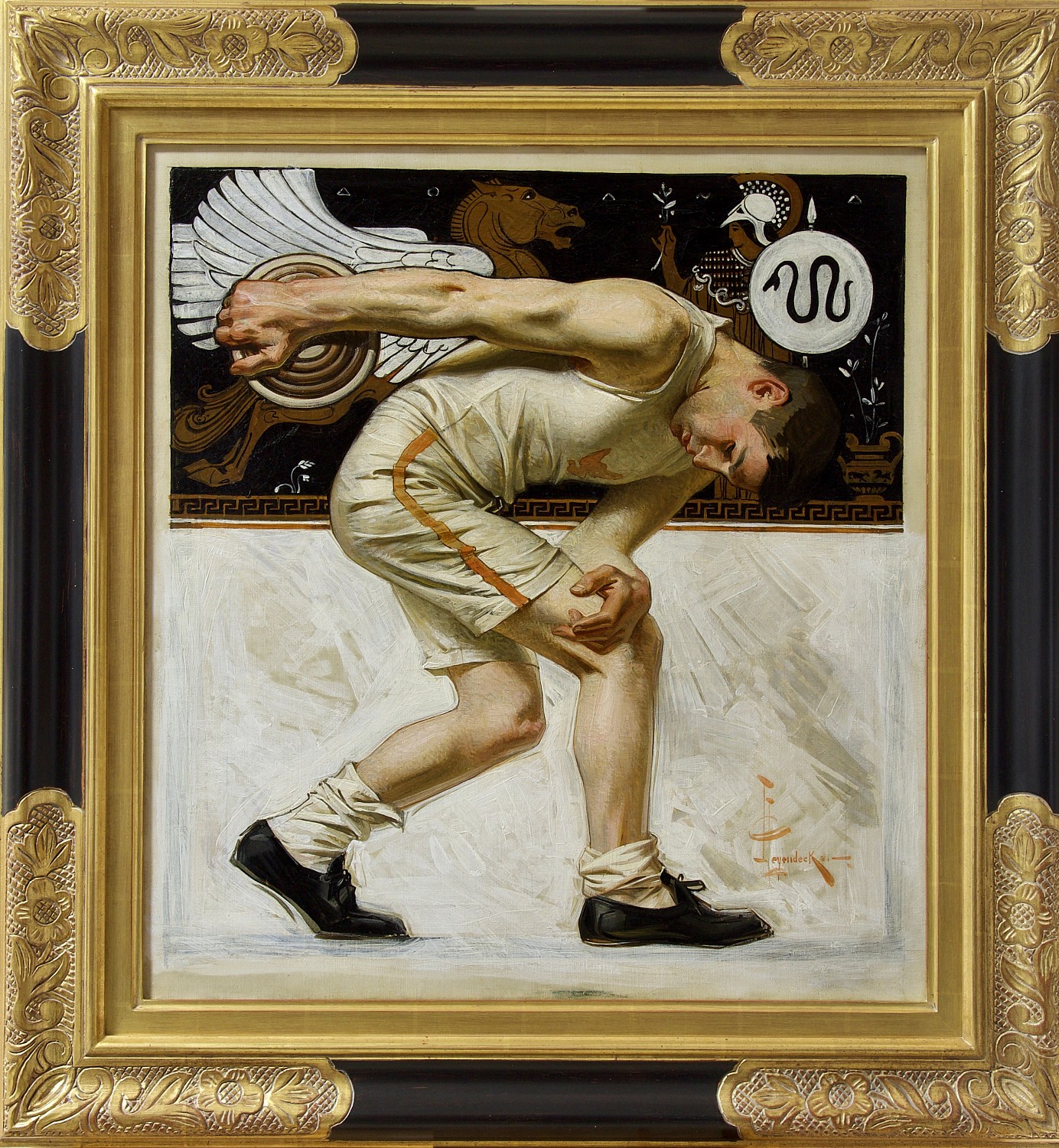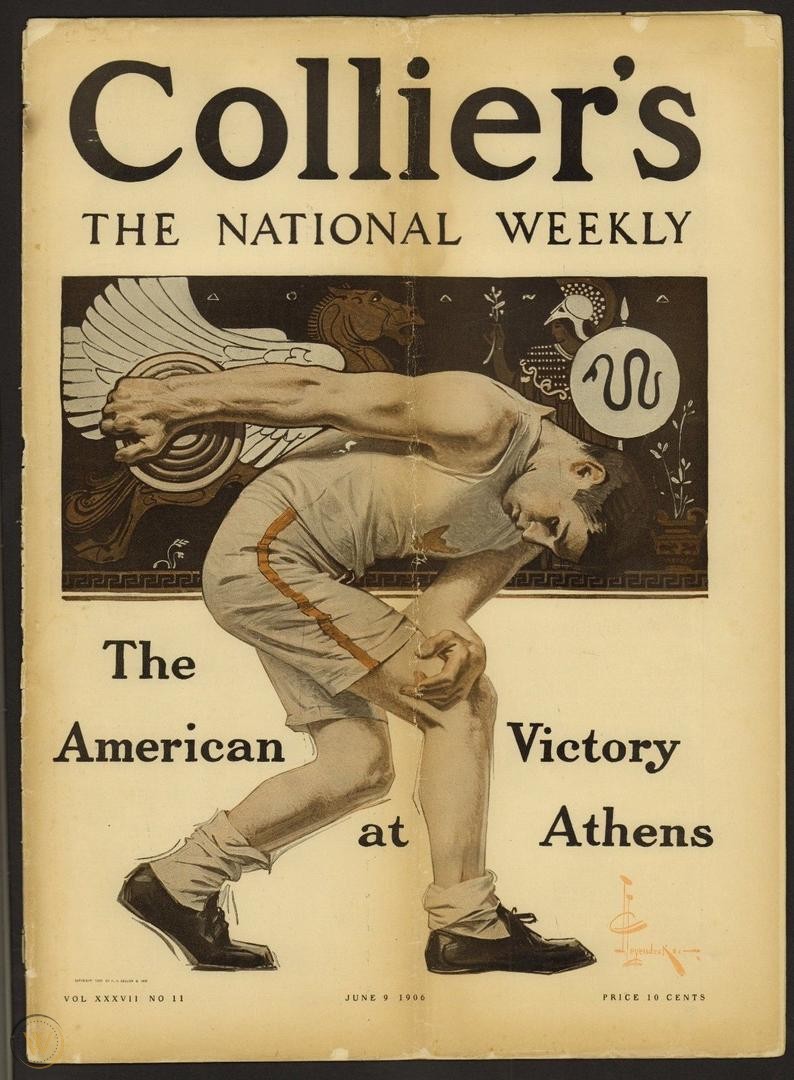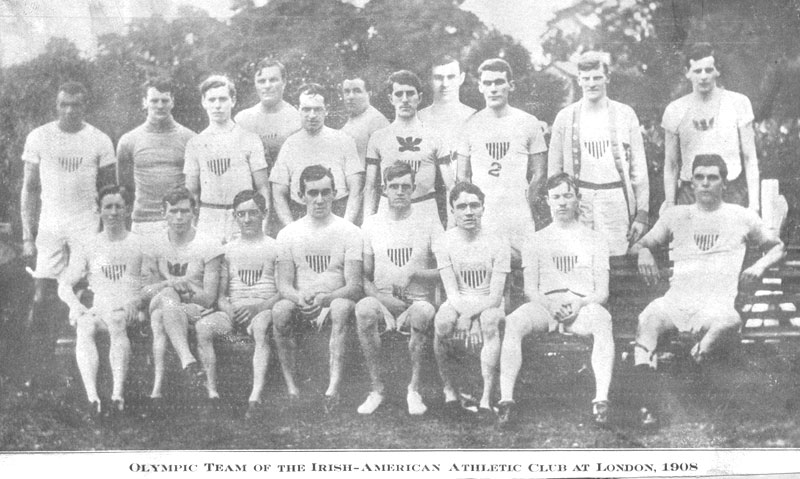"The Discus Thrower, Collier's Magazine Cover" Lot no. 4633
By Joseph Christian Leyendecker (1874-1951)
1906
24" x 21.75"
Oil on canvas
Signed Lower Right
SOLD
The Discus Thrower, The American Victory at Athens, Collier's Weekly magazine cover, June 9, 1906
LITERATURE:
L.S. Cutler and J.G. Cutler, J.C. Leyendecker, American Imagist, New York, 2008, p. 177, illustrated.
In the seven Olympic Games held from 1900 to 1924, members of the Irish-American Athletic Club won a total of 26 Gold, 22 Silver and 8 Bronze medals for the U.S. Olympic Team. While these men were not all members of the I-AAC when they won their Olympic medals, all of them wore the Winged Fist of the I-AAC at some point in their athletic careers. (Note: The International Olympic Committee no longer recognizes the 1906 Olympic Games in Athens as “official," but at the time they were considered as such. This page includes medals won at the 1906 Olympic Games).
Gold Medals- 26
Silver Medals- 22
Bronze Medals- 8
Left, 3rd image: Cover of Collier's Magazine, June 9, 1906, depicting Martin Sheridan, winner of the Discus event at the Olympic Games at Athens, from a painting by J.C Leyendecker.
Left, 4th image: I-AAC members won 10 track & field Gold medals in the 1908 Olympic Games at London, or as many as the nations of France, Germany and Italy combined. Photo courtesty of the Sheridan Family and Celtic Park Productions.
Click to see the complete list of Medalists in the Olympic Games
Explore related art collections: Magazine Covers / Sports / $100,000 & Above
See all original artwork by Joseph Christian Leyendecker
ABOUT THE ARTIST
Joseph Christian Leyendecker was born in Montabaur, Germany, and came to America at the age of eight. Showing an early interest in painting, he got his first job at 16 in a Chicago engraving house on the strength of some larger pictures he had painted on kitchen oilcloth. In the evenings after work, he studied under Vanderpoel at the Chicago Art Institute, and saved for five years to be able to go to France and attend the Academie Julian in Paris.
Upon his return, as a thoroughly trained artist with immense technical facility, Leyendecker had no difficulty in obtaining top commissions for advertising illustrations and cover designs for the leading publications. His first Post cover was done in 1899, and he did well over 300 more during the next 40 years. Among the most famous of these was his annual New Years Baby series.
His advertising illustrations made his clients famous. The Arrow Collar Man was a byword for the debonair, handsome male, and women wrote thousands of love letters to him in care of Cluett Peabody & Company. His illustrations for Kuppenheimer Clothes were equally successful in promoting an image of suited elegance. He was elected to the Society of Illustrators Hall of Fame in 1977.A major retrospective exhibition of Leyendecker's work was mounted at the Norman Rockwell Museum in Stockbridge, Massachusetts, in 1997-98.
Joseph Christian Leyendecker was born in Montabaur, Germany, and came to America at the age of eight. Showing an early interest in painting, he got his first job at 16 in a Chicago engraving house on the strength of some larger pictures he had painted on kitchen oilcloth. In the evenings after work, he studied under Vanderpoel at the Chicago Art Institute, and saved for five years to be able to go to France and attend the Academie Julian in Paris.
Upon his return, as a thoroughly trained artist with immense technical facility, Leyendecker had no difficulty in obtaining top commissions for advertising illustrations and cover designs for the leading publications. His first Post cover was done in 1899, and he did well over 300 more during the next 40 years. Among the most famous of these was his annual New Years Baby series.
His advertising illustrations made his clients famous. The Arrow Collar Man was a byword for the debonair, handsome male, and women wrote thousands of love letters to him in care of Cluett Peabody & Company. His illustrations for Kuppenheimer Clothes were equally successful in promoting an image of suited elegance. He was elected to the Society of Illustrators Hall of Fame in 1977.A major retrospective exhibition of Leyendecker's work was mounted at the Norman Rockwell Museum in Stockbridge, Massachusetts, in 1997-98.
Kent Steine







